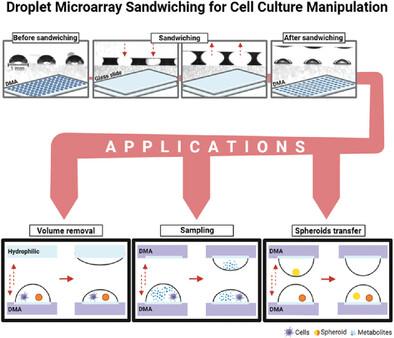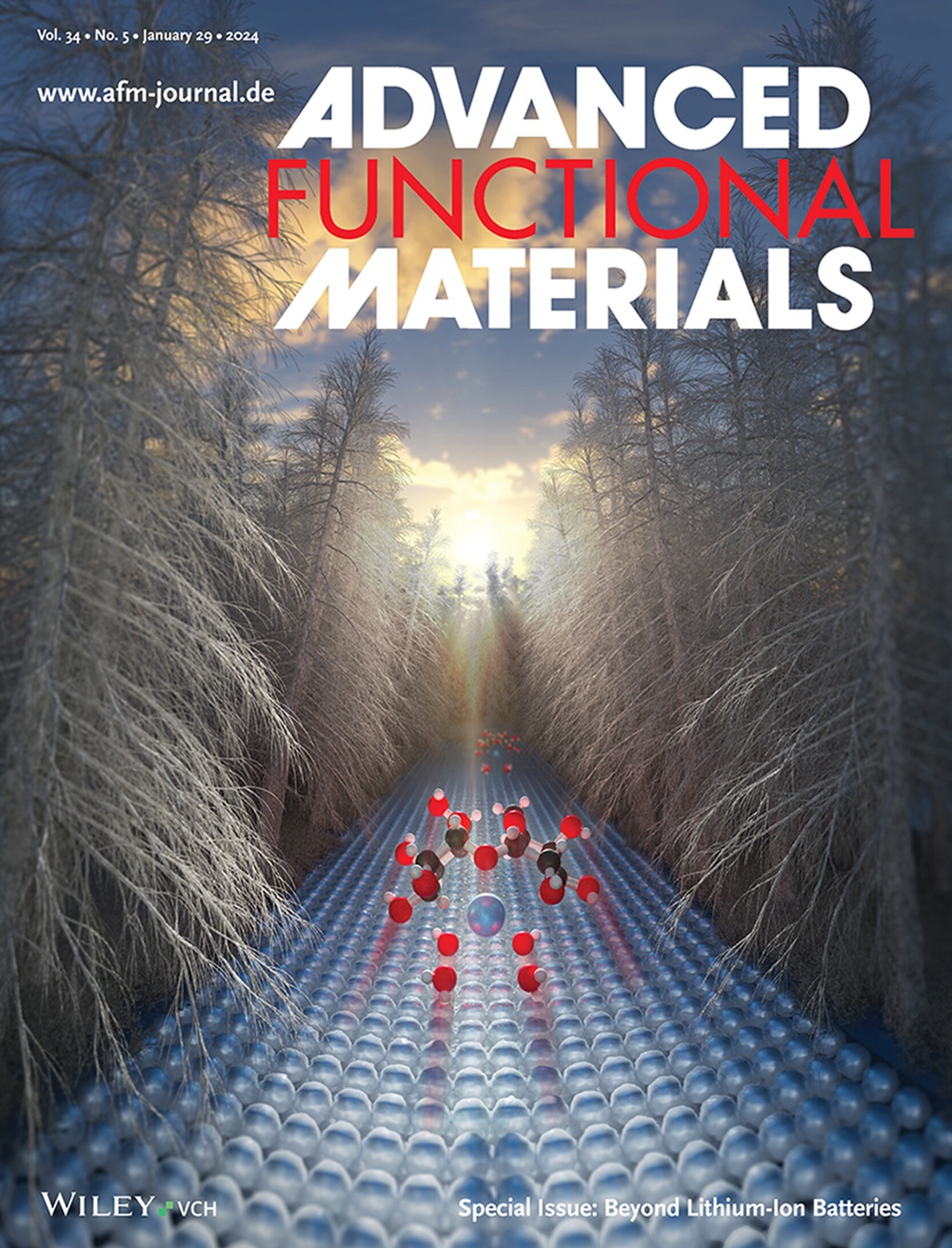Highly Parallel and High-Throughput Nanoliter-Scale Liquid, Cell, and Spheroid Manipulation on Droplet Microarray
IF 18.5
1区 材料科学
Q1 CHEMISTRY, MULTIDISCIPLINARY
引用次数: 0
Abstract
The droplet microarray (DMA) platform is a powerful tool for high-throughput biological and chemical applications, enabling miniaturization and parallelization of experimental processes. Capable of holding hundreds of nanoliter droplets, it facilitates the screening and analysis of samples, such as cells, bacteria, embryos, and spheroids. Handling thousands of small volumes in parallel presents significant challenges. In this study, we utilize the open format of the DMA for controlled, parallel high-throughput liquid manipulations using the sandwich technique. We demonstrate high-throughput medium replacement at nanoliter-scale, maintaining high cell viability on DMA for up to 7 days; for HeLa-CLL2 cells (adherent) and SU-DHL4 cells (suspension), and up to 14 days for HEK293 spheroids. Additionally, we achieve highly parallel aliquot uptake from nanoliter droplets, enabling non-destructive cell viability assessments. Furthermore, the presented method enables the parallel transfer of cell spheroids between different DMAs, allowing transfer and pooling of spheroids in seconds without damage. These advances significantly enhance the capabilities of the DMA platform, enabling long-term cell culture in nanoliter droplets and parallel sampling for high-throughput cell or spheroid manipulation. This broadens the scope of DMA's potential applications in fields such as cell-based high-throughput screening, formation of complex 3D cell models for drug screening, and microtissue engineering.

在液滴微阵列上实现高并行、高通量纳升级液体、细胞和球状物操作
液滴微阵列(DMA)平台是高通量生物和化学应用的强大工具,可实现实验过程的微型化和并行化。它能够容纳数百纳升液滴,便于筛选和分析细胞、细菌、胚胎和球体等样品。同时处理数千个小液滴是一项重大挑战。在这项研究中,我们利用 DMA 的开放格式,采用三明治技术进行受控并行高通量液体操作。我们展示了纳升级的高通量培养基置换,在 DMA 上维持了长达 7 天的高细胞存活率;对于 HeLa-CLL2 细胞(粘附)和 SU-DHL4 细胞(悬浮),以及 HEK293 球形细胞,维持了长达 14 天的高细胞存活率。此外,我们还实现了纳升液滴的高度平行等分吸收,从而能够进行非破坏性的细胞活力评估。此外,所介绍的方法还能在不同的 DMA 之间并行转移细胞球,从而在几秒钟内转移和汇集球体而不会造成损坏。这些进步极大地增强了 DMA 平台的能力,实现了在纳升液滴中长期培养细胞,并可平行取样进行高通量细胞或球体操作。这拓宽了 DMA 在基于细胞的高通量筛选、用于药物筛选的复杂三维细胞模型的形成以及微组织工程等领域的潜在应用范围。
本文章由计算机程序翻译,如有差异,请以英文原文为准。
求助全文
约1分钟内获得全文
求助全文
来源期刊

Advanced Functional Materials
工程技术-材料科学:综合
CiteScore
29.50
自引率
4.20%
发文量
2086
审稿时长
2.1 months
期刊介绍:
Firmly established as a top-tier materials science journal, Advanced Functional Materials reports breakthrough research in all aspects of materials science, including nanotechnology, chemistry, physics, and biology every week.
Advanced Functional Materials is known for its rapid and fair peer review, quality content, and high impact, making it the first choice of the international materials science community.
 求助内容:
求助内容: 应助结果提醒方式:
应助结果提醒方式:


